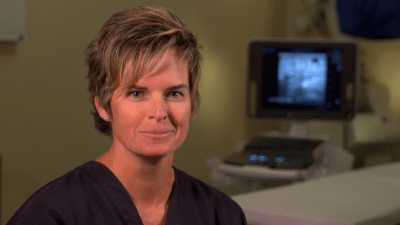
Deep Vein Thrombosis blood clots can be deadly but are preventable!
Risks of Deep Vein Thrombosis
Deep Vein Thrombosis (DVT), also referred to as Deep Venous Thrombosis, is a blood clot located within a deep vein, usually in the leg. A blood clot that breaks free and travels up to the heart or lungs is referred to as a Pulmonary Embolism (PE), which can stop blood flow and cause sudden death. The CDC estimates up to 100,000 Americans die every year from preventable DVT/PE
In addition, Deep Vein Thrombosis blood clots in the leg can permanently damage veins. The result in 50% of DVT survivors is Chronic Venous Insufficiency which results in long-term leg pain, heaviness and swelling that can progress to difficulty in walking, changes in skin color and open leg sores (known as leg ulcers). Deep Venous Thrombosis can significantly impair quality of life.
Causes of Deep Vein Thrombosis
Many patients ask us, "can varicose veins cause blood clots?" According to a recent study, 5% of patients diagnosed with chronic venous insufficiency, compared to the general population, are at risk for DVT. There is a distinct increased risk for patients over 70-years-old and obese. There are several factors known to contribute to the risk of DVT although a blood clot can occur in almost anyone.
- Heredity (Genetics)
- Age
- Obesity
- Smoking
- Lack of Exercise
- Pregnancy or Recent Birth
- Recent Surgery or Hospitalization
- Cancer Treatments
- Prolonged Sitting (Airplane Travel)
- Extended Bed Rest
- Oral Contraceptives
- Hormone Replacement Therapy
- Alcohol Consumption
Symptoms of Deep Vein Thrombosis
- Increased warmth in the affected area
- Pain or tenderness in the leg, ankle or foot
- Red or discolored skin
- Swelling in the affected area
Treatment of Deep Vein Thrombosis
The absolute best way to diagnose Deep Venous Thrombosis is with a Full Vein Exam and Duplex Ultrasound. A medical clinic with an experienced vein specialist should be able to get you in the same day for diagnosis if you have any concern about blood clots in your legs. Treatment and prevention will be accomplished in several ways depending on the patient risk factors and severity but usually starts with blood thinning medication.
Prescription compression stockings are a common preventative measure as are range of motion exercises, treating underlying blood disorders and vein therapy for Chronic Venous Insufficiency. An experienced vein doctor can discuss all treatment options with you after proper diagnosis from a Full Vein Exam and Duplex Ultrasound.
Entrevista con el Dr. Rose Durante nuestras entrevistas en video con Jilanne Rose le pedimos que nos contara algunas historias sobre sus experiencias en el tratamiento de las varices a lo largo de los años. Esta historia se trata de un paciente que se había despojado de las venas realizadas hace años y tenía miedo…
Read MoreDr. Rose Interview During our video interviews with Jilanne Rose we asked her to tell us some stories about her experiences in Varicose Veins Treatment over the years. This story is about a patient who had vein stripping performed years ago and was afraid of going through the process again because of the pain she…
Read MorePregunta: ¿puede usted conseguir congestión pélvica cuando usted nunca ha estado embarazado, y puede interferir con flujo de la orina?
Read MoreQuestion: Can you get pelvic congestion when you have never been pregnant, and can it interfere with urine flow? Answer: Pelvic congestion syndrome, although uncommon, can occur in women who have not been pregnant. These varicose veins in the lower abdomen typically do not cause problems with urination. Best to be evaluated by a gynecologist…
Read MorePregunta: tengo dolor y venas de araña apareciendo sobre todo en la zona del muslo después de mi ablación que fue hace 2 meses. GSV cerrado y SSV bien. Estoy usando 20-30 mmHG medias de rodilla-alta todos los días. ¿Cuál es la causa?
Read MorePregunta: tuve tratamiento de la escleroterapia de la espuma para la vena varicosa hace 2 meses por una técnica llamada catéter de flebogrif y leí que puede causar complicaciones como el movimiento. ¿Sigue siendo probable el riesgo? ¿Y qué sucede con la sustancia química usada en la espuma después de la inyección, permanece en el…
Read MoreQuestion: I had foam sclerotherapy treatment for varicose vein 2 months ago by a technique called flebogrif catheter and I read that it may cause complications like stroke. Is the risk still probable? And what happens to the chemical substance used on the foam after the injection, does it remain in the blood stream and…
Read MoreQuestion: I have pain and spider veins popping up mostly in the thigh area after my ablation which was 2 months ago. GSV closed and SSV ok. I am wearing 20-30 mmHG knee-high stockings every day. What is the cause?
Read MorePregunta: ¿Cuánto tiempo toma la cirugía de la vena varicosa en sí misma y cuánto hora debo esperar para la recuperación?
Read MorePregunta: ¿Qué puede decirme un examen de reflujo venoso? ¿Cómo mide el tratamiento la efectividad de mis venas?
Read More
